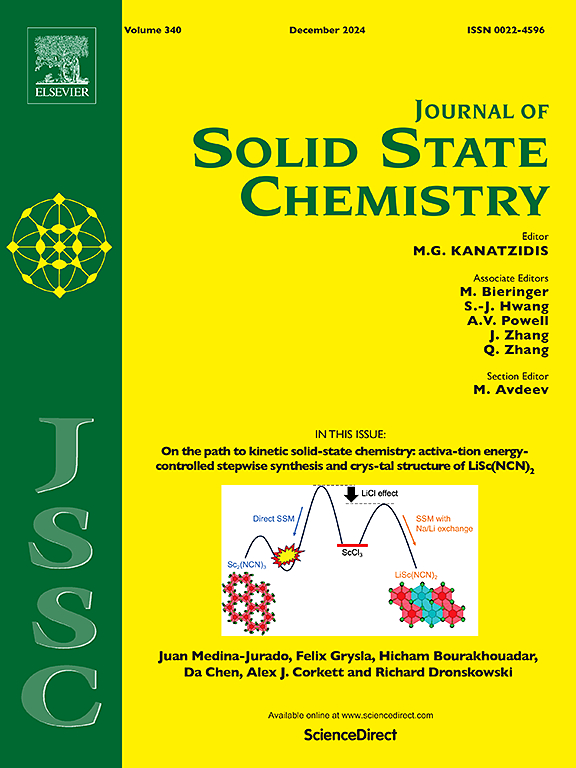How to separate two Ts in a pod: Classifying T- and T′-type Ruddlesden-Popper cuprates by machine learning
IF 3.2
3区 化学
Q2 CHEMISTRY, INORGANIC & NUCLEAR
引用次数: 0
Abstract
The first-order Ruddlesden-Popper (RP) phases A2BX4 adopt three structure types that differ in coordination geometry around the B site: T-type (octahedral) and T′-type (square planar), which are most common, and T∗-type (square pyramidal), which is rare. Especially for RP cuprates A2CuO4–δ, it is not intuitively obvious which structure is preferred depending on the combination of cations occupying the A site. Machine learning models were developed that can separate the T- and T′-type structures among these cuprates with an accuracy of >90 %, provided that the T∗-type does not form and the phases can be synthesized. Based on these models, structures were predicted for solid solutions (A′, A″, A‴)2CuO4–δ containing a complex mixture of A cations (A′, A″, A‴ = Sr, La, Gd, Ho, In, Bi). The predictions were tested by targeting various members of these solid solutions through high-temperature reactions followed by slow cooling. Three samples contained pure RP phases which were confirmed to adopt the predicted structures: T-type for Sr0.4La1.5Ho0.1CuO3.8, and T′-type for Gd1.7Ho0.2Bi0.1CuO4 and La0.4Gd1.2Ho0.4CuO4. Five other samples were mixtures that contained RP phases whose structures (when not T∗-type) were correctly identified by a slightly better performing model based on extra randomized trees classifier.

求助全文
约1分钟内获得全文
求助全文
来源期刊

Journal of Solid State Chemistry
化学-无机化学与核化学
CiteScore
6.00
自引率
9.10%
发文量
848
审稿时长
25 days
期刊介绍:
Covering major developments in the field of solid state chemistry and related areas such as ceramics and amorphous materials, the Journal of Solid State Chemistry features studies of chemical, structural, thermodynamic, electronic, magnetic, and optical properties and processes in solids.
 求助内容:
求助内容: 应助结果提醒方式:
应助结果提醒方式:


